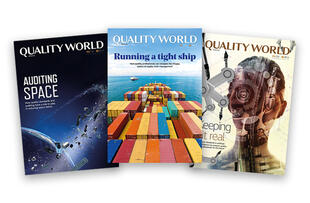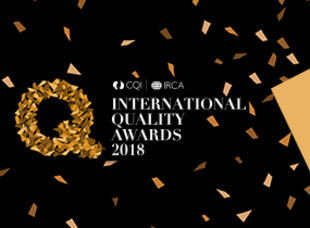
A beginner’s guide to performance management tools
Progress indicator

With the help of quality experts, we introduce some of the key tools for measuring, managing and improving performance – and how to use them to best effect
By: Robert Langkjær-Bain
Benchmarking
Benchmarking is an organisation’s chance to find out what good looks like, by making detailed comparisons either between different parts of its own operations, or to other external organisations.
The key challenge, says Chris Smith, QM Programme Lead at Rove Consultancy, is “whether you’re actually comparing apples with apples or apples with pears” – especially when comparing externally. “You may think you have the right data, but when you start asking a few key questions, you realise you’re not quite comparing the right information. You’ve got to make sure you get some transparency of the datasets provided by the companies that you’ve linked up with.”
KPIs
Key performance indicators (KPIs) are everywhere in modern business. The question is, are they helping?
Bob Hughes CQP FCQI, director of Temple QMS, says effective KPIs must be closely tied to organisational strategy. The company has to ask itself: “What does this business want to achieve in the next five years?”
For example, one particularly revealing KPI is the value of credit notes issued, says Hughes. “Credit notes are a thing that very often are not fed back into quality management. What are you giving them credit for, and what part of the quality management system failed?”
Smith says organisations should also make sure that it’s clear who is accountable for every KPI, and avoid having too many. “They can be a two-edged sword,” Smith says. “With the best will in the world, you cannot tick every box. KPIs should be minimised, and very focused on the core business processes and what will ultimately add value to the business.”
Performance appraisals
The key to effective performance appraisals is not just that you do them, but how you do them, and, crucially, what happens next. Smith says: “I see a lot of managers just going through the process. You can feel it from the other side of the table that they’re not really engaged in the process. If it’s done correctly and you have the chance to mutually agree objectives and so on, it can be good, but it can also be a demotivator if your manager has just rushed in.”
Hughes agrees, saying: “If you don’t react to the conversation you had in the appraisal, the next time you have one, people will think it’s a waste of time. Even if you go back to the person and explain why you can’t do [what they wanted], that’s better than not doing anything at all.”
Mission statements and vision statements
Statements of companies’ raisons d’être have become more and more popular, as organisations seek to show the world that they stand for more than just profit.
Ideally, says Smith, these big-picture strategic statements should influence everything, including KPIs, although sometimes they are “more of a marketing tool”.
For these statements to be more than just lip service, there has to be “deployment” behind them, says Hughes; some kind of investment, processes or activities that turn the words into action.
For companies certified to ISO 9001:2015, these statements are pretty much a requirement, says Hughes, as the concept of “strategic direction” is enshrined in the standard. “That starts from the top, and you can call it a mission statement if you want, but the point is, what actually does the business want out of its quality management system? Once you understand that, you can manage the effectiveness of what you’re trying to do.”
Management dashboards
At their best, management dashboards can provide a digestible, visual, up-to-the-minute summary of how a business is performing.
Smith says he’s seen them used to great effect, especially in companies that work on numerous projects at once. “Obviously everything is only as good as the information that is inputted,” says Smith. “But when they’re working well, they’re very good.”
But it’s important to remember that maintaining and updating dashboards may require an investment of work – especially if you’re using them to create live visual displays. And if they aren’t kept current, they may have the opposite effect to what you hoped for.
Lean management
Based on the principles of continuous improvement and eliminating waste, the Lean philosophy has been hugely influential in businesses around the world. “Generally speaking, people are switched on to Lean,” says Hughes.
Lean is most useful in large-volume businesses, particularly manufacturing, where “a few seconds saving can produce major savings in cost”, says Smith. The key is to get everyone’s buy-in. “It’s a great process, as long as you’re giving the proper training and you get people involved.”
Quality World

Get the latest news, interviews and features on quality in our industry leading magazine.

